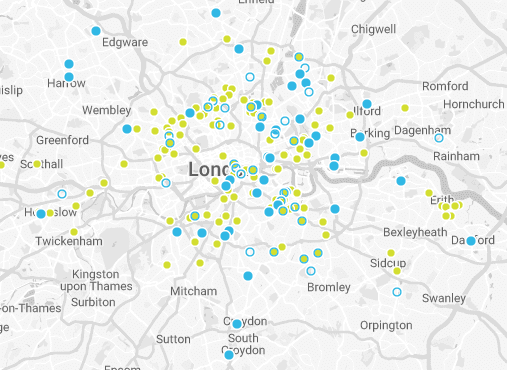16th August 2024
In June, the London Assembly launched an investigation into Community Land Trusts and Housing Co-operatives. Its housing committee scrutinises the work of the mayor of London.
They kicked it off by visiting two projects recently completed by CLTs – RUSS’ 36 affordable homes in Ladywell, and London CLT’s 11 affordable homes in Sydenham, both in the London borough of Lewisham.
Then they held an evidence session in July. Our CEO, Tom Chance, gave evidence alongside others from the sector.
Now we have submitted our written evidence. In it, we set out our vision for a city in which all Londoners have the option to control the management of their homes; to codesign schemes for small sites and significant regeneration; to make different and sometimes innovative choices about the kinds of homes and communities that are built; to steward land and homes so they can achieve development without displacement.
There is already a hive of activity across London, and a legacy of thousands of co-operative homes from the 1970s, as you can see on CLH London’s map of projects:

But community led development is still a tiny niche in London. In recent years it has been forced to try and grow by the hardest means — taking on small sites with lots of cost issues, aided by stop-start grants to cover early costs.
In 2023 we published our State of the CLT Sector report, in which we proposed that CLTs could grow to a mainstream option through five replicable ‘products’ – types of project, and ways to deliver them, that are proven and scalable.

We have continued to develop this idea. Looking at London, and influenced by CLH London’s work on standardised approaches, to propose three CLT products that could achieve scale in London:
- A small cadre of small site specialists able to do urban infill projects with local communities (along with London CLT and RUSS, NW3 CLT and Crystal Palace CLT have both now submitted planning applications, so there is a little ecosystem emerging that could be capitalised and strengthened).
- Allocations of homes in larger sites built by developers or housing associations, as at St Clements and St Anns, both the result of CLT campaigns.
- Acquisitions of homes, rather than building them, whether new homes from SME developers, or second hand homes from housing association disposals or private landlords leaving the market.
As CLH London shows, there may be other products more suitable for housing co-operatives and cohousing (the latter sadly not included in the scope of the investigation).
Our submission describes these three CLT products, the barriers that can be removed, and then a set of 10 recommendations for the GLA, boroughs and the government. Taken together, they could make our vision a reality. Londoners would no longer be left on the sidelines — they could play an active role to develop their communities without displacement, to design homes fit for a changing climate, to build communities as well as bricks and mortar.
